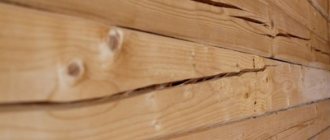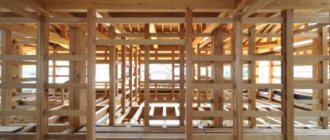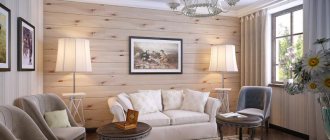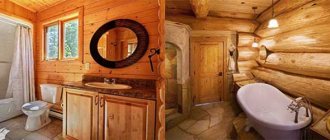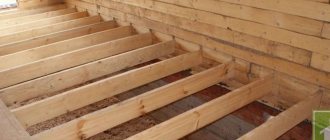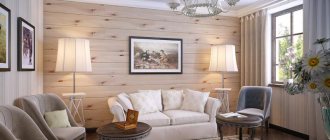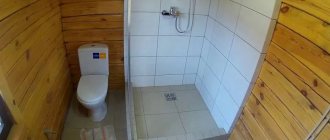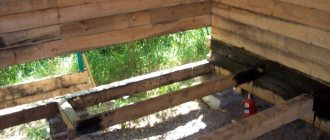The formation of cracks on the timber during drying is inevitable. However, this is not a reason to worry if their width does not exceed 2 cm and depth 5 cm. Sometimes small cracks are used as a decorative element when decorating a house as antique. But deep damage through which heat will escape must be repaired immediately.
Content:
- Where do the cracks come from?
- Why are deep cracks in timber dangerous?
- How to repair cracks
- How to Prevent Cracking
- Choosing a construction company
Repairing cracks in timber or logs is an almost obligatory part of maintaining wooden houses. Any wood cracks - this is a natural property of the material. Sometimes cracks look beautiful and decorate the surface. But when the quality and reliability of the walls suffers, you have to deal with the defect.
In the article we will talk about the reasons for the appearance of cracks in timber, working methods of combating, and methods for preventing the appearance of defects.
Preventing cracks
There is no 100% recipe for preventing cracks in wood. One of the most suitable methods of protection is drying in natural conditions, in the bark, without exposure to sunlight. Such drying can take years, it all depends on the material and thickness of the trunk.
There is also a method of soaking wood in sea water for 3 years (for oak), but it is used only in the manufacture of joinery and piece products, as it requires significant costs.
Where do cracks in the timber of a house come from?
1. Shrinkage. When shrinking, wooden parts dry and curl. The shape and linear dimensions change. Cracks appear on the surface. Cottages made of logs and timber with natural moisture are especially susceptible to this danger. It is almost impossible to find photo reviews about laminated veneer lumber with cracks, but huge cracks in logs are considered the norm.
2. Changes in temperature and humidity. The upper layers of wood warm up faster, give off moisture, and shrink - but the core at this moment retains its size. As a result, the surface breaks.
Prevention
What to do to prevent cracks from occurring?
First of all, you need to choose the right material for construction. Many companies are engaged in the construction of houses made of timber and before purchasing from them you can choose the quality of the wood. But remember that even treated and properly dried wood does not give you a 100% guarantee against the formation of cracks.
Why are cracks in timber dangerous?
- Thermal insulation is reduced. An intact surface protects better from heat loss than a wall with breaks. The degree of reduction depends on the size of the cracks - the wood often spreads along the entire length of the log and timber, the depth reaches 25-50%. As a result, the wall freezes and the house becomes colder.
- The appearance is deteriorating. A wall with cracks loses its original attractiveness, the house seems old and unkempt. The defect on a log looks natural, but a cracked beam does not evoke pleasant emotions even among connoisseurs of natural materials.
- Strength is lost. Deep tears reduce the overall reliability of the structure - especially when a piece breaks off from a part or a log splits into pieces.
- Maintenance costs are rising. Defects need to be eliminated, repaired, processed. Loss of insulation increases heating costs.
- Service life is reduced. Water gets into the open cracks, pests infest inside the log, and the tree rots. The destruction of wood accelerates significantly, begins from the central part, and occurs unnoticed.
What to do with already formed cracks?
Even if you apply all the above methods to protect wood from cracking, cracks will still occur. Sooner or later. Big or small. But they will be guaranteed. To prevent them from turning into cold bridges and homes for microorganisms and insects, they must be eliminated in a timely manner.
This is done in different ways. One of the simplest is to use colorless sealant . Cracks can also be caulked or sealed with putty. The ends of a log or beam require special attention. It is recommended to paint them or treat them with some modern compounds that are designed specifically for these purposes.
After sealing the cracks, repainting occurs. This will have to be done throughout almost the entire life of the wooden housing. This is the only way it will last as long as possible - it will be warm and comfortable, will not lose its presentability, will not rot and will not be eaten by wood-boring insects.
How to repair cracks in timber
Process and leave as is
Impregnation protects the wood inside the cracks. Photo from the site lesobirzha.ru
New breaks rarely appear on a cracked log - the crack compensates for internal stresses, increases and decreases depending on the temperature and humidity of the material. The gap is treated with an antiseptic and protected from moisture.
Caulk with moss
Moss restores thermal insulation and protects against moisture. Photo from ecosrub.ru
Classic processing is often used in traditional log cabins. The moss is soaked, pushed into the gap, hammered, the excess is cut off, and the surface is sanded.
Cover with a mixture of PVA and sawdust
A mixture of sawdust and PVA is a natural putty that securely holds the edges together. Photo 1drevo.ru
The adhesive paste is suitable for filling small cracks and is invisible after drying and processing.
Apply sealant
Sealants are easy to apply, durable, and resistant to moisture, frost, and birds. Photo from the website neomid-500-450-440.rf
Special compositions for wood protect cracks from moisture and pests. After hardening, the acrylic sealant retains its elasticity and prevents the formation of new damage.
Use additional materials
Additional protection is suitable for sealing large gaps. Photo rubankom.com
Before applying the sealant, chips of the required size and a cord made of foamed polymer are inserted into large cracks.
Video description
The video shows how and what needs to be done to protect logs using putty and sawdust:
Acrylic sealant
Before sealing the cracks between the logs in a wooden house with sealant, you need to clean the base. A moisture-resistant elastic mass on an acrylic base can be applied in a layer of up to 5 mm. If the depth of the split is large, then a silicone cord or polymer cord is first immersed in it. They are not associated with the production environment, so the placeholder's behavior will not be changed.
Wood sealant Source massivcolor.ru
Experts have differing opinions regarding sealant. The cork practically does not breathe; the mass penetrates into the pores. This leads to a decrease in the ability of the log to release moisture in the damaged area. That is, the risk of rotting and subsequent biological damage increases.
There is a possibility of dust formation under the sealant film. This will cause the aggregate to fall out and cause the split to increase in width. Silicone or polymer cord can affect the creation of a greenhouse effect, which also results in mold, mildew, bacteria and rot.
How to prevent cracks in a wooden house
Small cracks cannot be avoided, but you can reduce the likelihood of large cracks in advance. To do this, you need to choose the right material, use compensation technologies, find the best company for the construction of wooden houses and comply with basic operating conditions.
Use compensation cuts in the log
The cut relieves internal stress - when deformed, the wood predictably diverges in the plane of the cut. Photo from escom.su
Compensation cuts are made in the upper part of the log or timber. The cut reduces the number and depth of cracks on the side surfaces. The main rule is not to make the cut too deep, otherwise the log may split in half due to deformation.
Build a house from dry timber
Pre-drying eliminates some of the problems - the percentage of shrinkage decreases, the parts do not become deformed. Cracks appear, but usually they are not that deep.
It takes several months to dry a piece with a diameter of more than 10 cm, so lumber with natural moisture is often passed off as dry timber. Before purchasing, be sure to read reviews about wooden house construction companies - owners often share negative experiences and talk about low-quality materials.
Order the construction of a house made of laminated veneer lumber
Cracks in laminated veneer lumber do not occur through. Photo from the site jurnalstroyka.ru
Glued wood also cracks, but the depth does not exceed the thickness of one board (lamella). The tear lines do not converge, the boards keep the adjacent ones from cracking.
It’s not for nothing that we mention houses made of laminated veneer lumber: reviews from owners who already live in these houses confirm that there is no need to deal with deep cracks. A fine network of defects is considered normal and has virtually no effect on performance characteristics.
Don't heat up rooms too quickly
If the house is not constantly used in winter, then it is better to avoid sudden heating - after a few cycles deep cracks will appear inside. Engineers recommend maintaining a constant temperature inside and avoiding changes.
Recommendation from the instruction manual for houses made of laminated veneer lumber (instructions for GOOD WOOD customers):
The rate of change in air temperature is no more than 3°C per day.
When heated, expansion occurs - the surface area increases, the wood becomes deformed and cracks. Steam gets inside and humidity rises. If, after such heating, you leave the house without heating again, the moisture inside will freeze and cause additional destruction of the fibers. Builders recommend a temperature change rate of 3°C per day. At an initial temperature of -15°C, it will take 10-15 days to warm up, but the wall material will not be damaged.
Maintain optimal temperature and humidity The same document shows the temperature and humidity values that are recommended to be observed in a wooden house:
- minimum temperature not lower than 12°C;
- recommended temperature 22-24°C;
- humidity - 45-65%.
If you build a house from timber for permanent residence, then the parameters are met automatically. But if you come only on weekends, then to protect the walls it is better to install automation and maintain the minimum temperature between visits.
The main thing is to choose the right builders
Any attempts to prevent cracks from appearing are useless if the builders are hacks. A good company building houses from timber is a rarity. Now there are a lot of intermediary companies that only collect orders and transfer them to outside teams. Others use local forests instead of the promised northern winter felling, “forget” to make cuts, and assemble houses in violation of technology. We have compiled a rating of country house construction companies, in which you can see customer ratings and reviews. On separate pages there are official reviews about construction companies, a forum about wooden houses, and ratings.
Go to the directory of construction companies and read reviews
Why does wood crack?
As always, before fighting any “enemy”, you need to study it more closely. In this case, we are interested in the process of crack formation on timber and logs. Let's consider step by step how and why such annoying defects appear on lumber.
Before the tree was cut down to make profiled timber or rounded logs, it literally lived in the forest. To grow, trees use not only sunlight, but also nutrients from the soil that are beneficial to them. They receive these substances through the roots. But the most important thing is how they do it.
And trees feed on groundwater, in which these same substances are dissolved. Such water in the form of moisture rises up the roots, trunk and branches due to the well-known capillary effect. This is precisely why freshly cut wood contains moisture.
When a tree is cut down and processed into lumber, it no longer receives moisture. Moreover, it loses it thanks to the same capillary effect. And here lies the key point of cracking .
The fact is that moisture leaves the wood unevenly. It evaporates most quickly from the ends, and a little slower from the longitudinal edges. But moisture leaves the conditional center very slowly. While it is there, porous wood retains its original volume. But those places where the moisture has suddenly left begin to physically shrink.
Because of this, so-called internal stresses arise in the wood. They “tear” the log or beam, forming cracks - deeper at the ends, smaller ones along the former trunk. After a crack forms, the internal stresses subside (this is an important point).
How dangerous is cracking?
Although lumber manufacturers and sellers of specialized preparations for sealing cracks try in every way to assure buyers of the danger of cracking, in fact, not everything is so scary. Here are the arguments they give:
- If the beam cracks, then when moisture gets in, it freezes in winter and can tear it apart.
- As a result of cracking, rotting begins.
- Pests accumulate in cracks.
- The thermal insulation properties of the house are reduced.
To be convinced that these statements are controversial, just go to the nearest village and look at the houses there - the walls are simply replete with cracks. However, the people living there do not notice any danger.
How to extend the shelf life of a house made of timber?
Knowing about the upcoming problem before construction begins, you can thoroughly prepare for it and significantly extend the life of your future home. Believe me, over the centuries-old history of building log houses, craftsmen have found more than one way to deceive nature.
Calibration
Everything in this world moves along the path of least resistance, so most cracks appear on the edge of the beam that is closer to the core of the material. But what does this give us?
A lot, actually. If you take this fact into account when building a house, and hide problem areas inside or between the crowns, the facade will remain free of defects longer, and the cracks themselves, when they appear, will be insignificant.
Of course, all this applies to ordinary non-profiled timber. A comb already created by the manufacturer will not give you any freedom to maneuver.
Compensation cut
But you must admit that in the realities of mass production, keeping track of the fibers is quite troublesome. This will greatly reduce the speed of work, and therefore increase the cost of the finished product, ultimately reducing its competitiveness. Although if there was no other choice, they would have done so. We calibrated the logs manually, made notes for the front side, but why?
The problem can be easily solved using an expansion joint. Indeed, why allow spontaneous ruptures to occur when you can carry out a neat, civilized cut?
Through it, moisture will leave the tree more evenly, and there will be no cracks. The cut will just widen a little and that’s it. Of course, such a trick will be clearly visible at the open ends and even such technical cracks will have to be caulked, but it’s better than the tree itself cracking wherever it wants.
How to protect timber from cracking
Hello, our dear readers. Owners of your own wooden houses and those of you who are just planning to build them. Today we will talk about such a well-known problem as cracking of lumber.
After all, there is no greater sadness than watching the appearance of more and more cracks on the walls of your still not really inhabited home, in the construction of which, by the way, a lot of nerves, labor and money were invested.
So the question arises: what can be done to prevent the timber from cracking, what and how to treat it? But is it formulated correctly? And is it really possible to preserve the presentation of a wooden facade using only impregnations and lotions?
